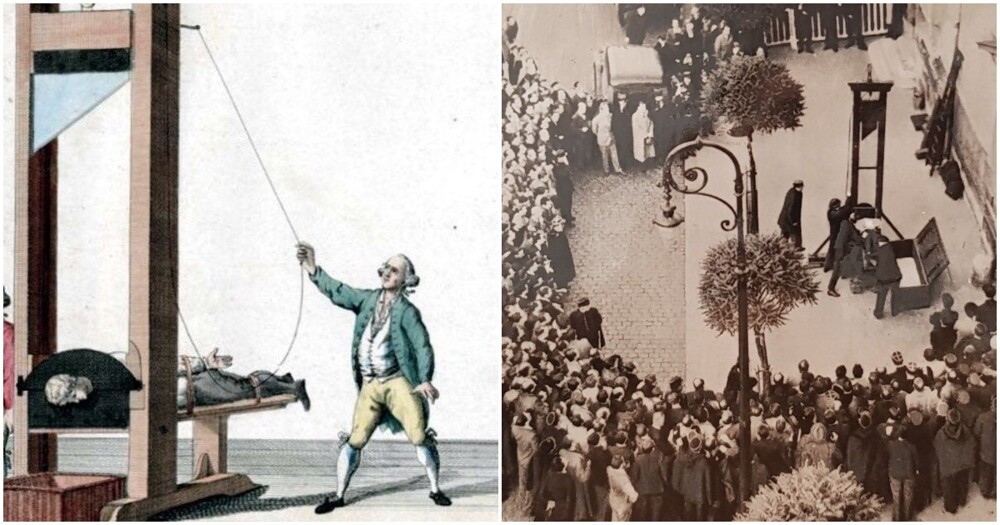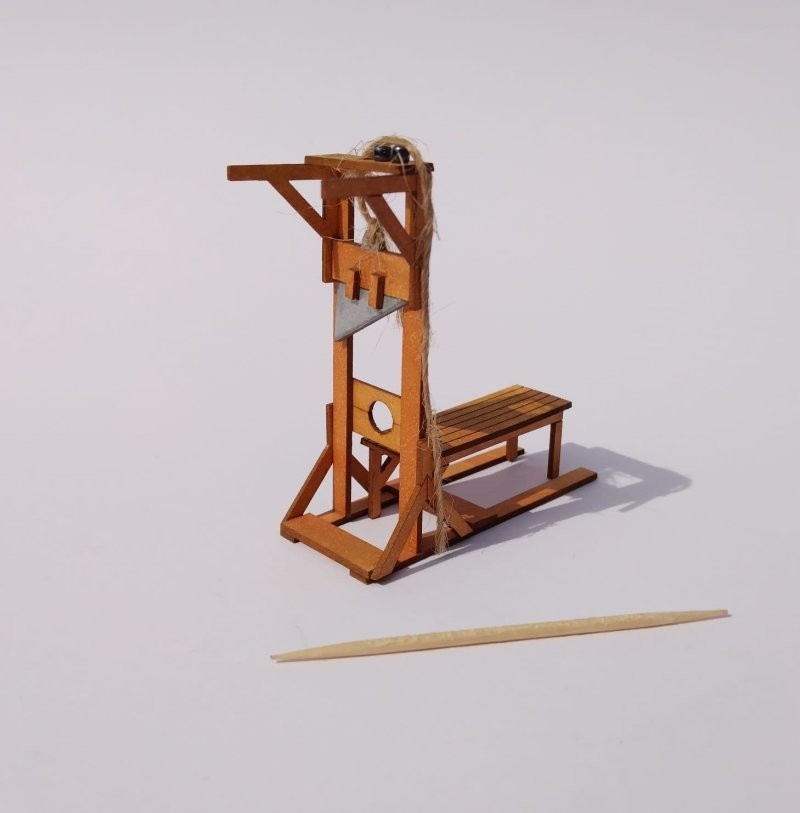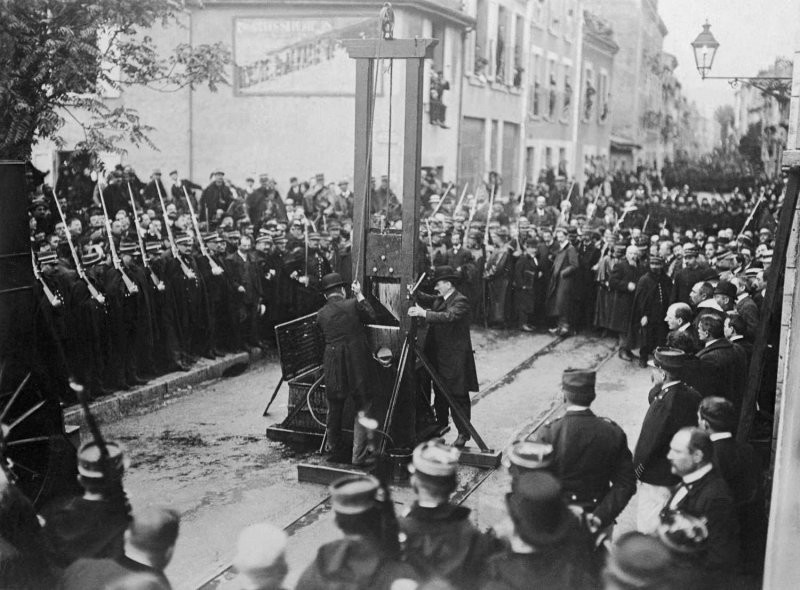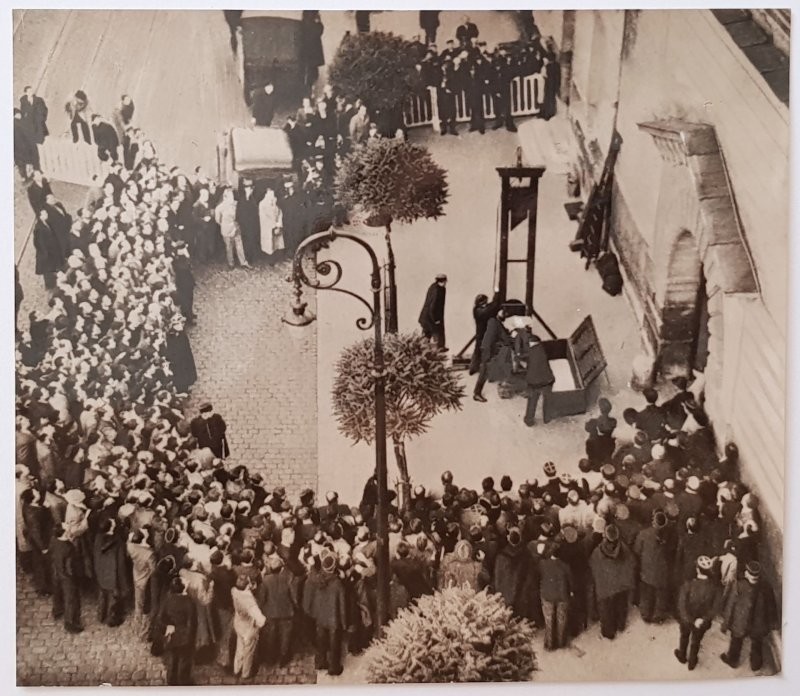No matter how paradoxical it may sound, yes - in comparison with other methods of execution in the 18th century, the guillotine was quite gentle. If you compare it with such entertainment as quartering or wheeling, for example. 
And even the usual beheading with the help of an executioner was not so easy. We watch movies like crazy! and the head rolls along the bloody flooring, to the hooting of the crowd. But not all executioners were qualified enough to carry out this procedure quickly, and the death throes of the condemned could last up to five minutes while he was struck several times one after another. 
Joseph Guillotin
In general, devices similar to the guillotine have already been known since about the 14th century. And the creator of the guillotine in its modern interpretation was Dr. Joseph Guillotin. He proposed this simple invention to the Constituent Assembly of France in 1789, arguing that it was humane and simple and plus equalized everyone under the law. Both rich people and commoners will be executed equally.
The guillotine was improved by Dr. Antoine Louis. Dark humor: in France, because of Antoine, the guillotine is often called the gentle "la Louisette".
According to a number of confirmed data, the inventor of the mechanism is also called the German Tobias Schmidt, but he categorically refused to have anything in common with the killing machine. But fact, as we know, is the most stubborn thing in the world. 
A little about the work of the guillotine, because it is the simplest structure, striking in its obviousness. The head of the condemned is placed in the blocks, onto which, under the influence of a counterweight and a spring, a sharpened steel blade weighing approximately 100 kg falls at breakneck speed.
The guillotine was put into operation after all the modifications - in the spring of 1792. The first person executed on the gun was the famous thief Nicolas Pelletier. His execution took place on April 25.
It was the guillotine that became a kind of sad symbol of the Great French Revolution. Never before and never after has the old guillotine worked so hard as at that time. In the 1790s, approximately 12 thousand people fell under the blade. More than 1,000 people were executed in the Place de la Concorde in Paris alone. Including, by the way, Marie Antoinette and Louis XVI.
And, of course, where would we be without the leader of that very revolution - Maximilian Robespierre. He and Nicolas Saint-Just were also taken to the scaffold.
Of course, there were some innocent victims. It was on the guillotine, for example, that the chemist Antoine de Lavoisier died - the court accused him of conspiracy. 
“Louise” became so popular that toy “guillotines” began to go on sale so that children could play executions with their toys. Moreover, the toy was so harsh that only in the 20th century did adults realize that toys could be made without blades.
The Parisians, spoiled by executions, at first treated the guillotine with contempt, saying that it was somehow unspectacular and painfully fast. What about torture?! But mass executions and the high status of the condemned somehow softened the bloodthirstiness of the capital's French. 
All this looks like some kind of stories from the very distant past, but in fact, executions by guillotine were practiced right up to 1939.
On the day of the execution, crowds gathered in the squares and even famous musicians performed. The authorities eventually banned public executions because the crowd, excited by the spectacle, then staged mass fights and smashed shops. 
But not by France alone. "Louise" was also used in Italy, England, Belgium and Sweden.
Well, needless to say, Nazi Germany could not ignore such a wonderful invention, pathetically calling the guillotine the “Falling Sword” (Fallschwert). They liked to execute some students with anti-war leaflets and other citizens of the country who were disliked by the Reich. There were about 40 thousand of them.
Add your comment
You might be interested in:
























